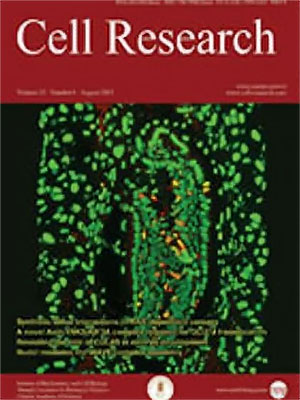Volume 1 Issue 2, December 1990: 141-151
ORIGINAL ARTICLES
Altered cytoskeletal structures in transformed cells exhibiting obviously metastatic capabilities
Zhongxiang Lin1, Yaling Han1, Bingquan Wu2 and Weigang Fang2
1Department of Cell Biology, Beijing Institute for Cancer Research
2Departmont of Pathology, Beijing Medical University
Correspondence:
Cytoskeletal changes in transformed cells (LM-51) exhibiting obviously metastatic capabilities were investigated by utilization of double-fluorescent labelling through combinations of: (1) tubulin indirect immunofluoreseonce plus Rhodamine-phalloidin staining of F-actins; (2) indirect immunofluorescent staining with α-actinin polyclonal- and vinculin monoclonal antibodies. The LM-51 cells which showed metastatic index of >50% were derived from lung metastasis in nude mice after subcutaneous inoculation of human highly metastatic tumor DNA transfected NIH3T3 cell transformants. The parent NIH3T3 cells exhibited well-organized microtubules, prominent stress fibers and adhesion plaques while their transformants showed remarkable eytoskeletal alterations: (l) reduced microtubules but increased MTOC fluorescence; (2) disrupted stress fibers and fewer adheaion plaques with their protein components redistributed in the cytoplasm; (3) F-actin- and α-actinin/vinculin aggregates appeared in the cytoplasm. These aggregates were dot-like, varied in size (0.1–0.4μm) and number, located near the ventral surface of the cells. TPA-induced actin/vineulin bodies were studied too. Indications that aotin and α-actinin/vinoulin redistribution might be important alterations involved in the expression of metastatic capabilities of LM-51 transformed cells were discussed.
Cell Res 1: 141-151; doi:10.1038/cr.1990.14
FULL TEXT | PDF
Browse 2697


